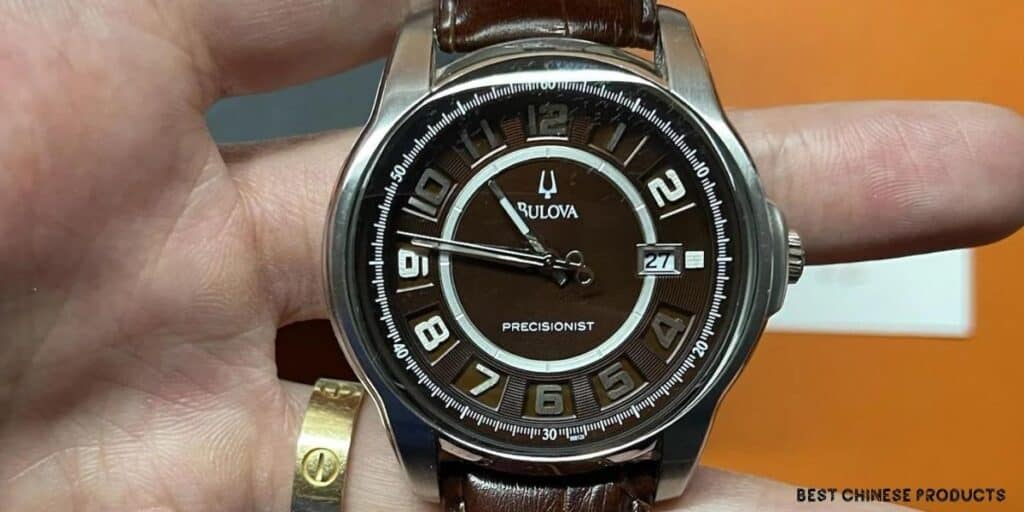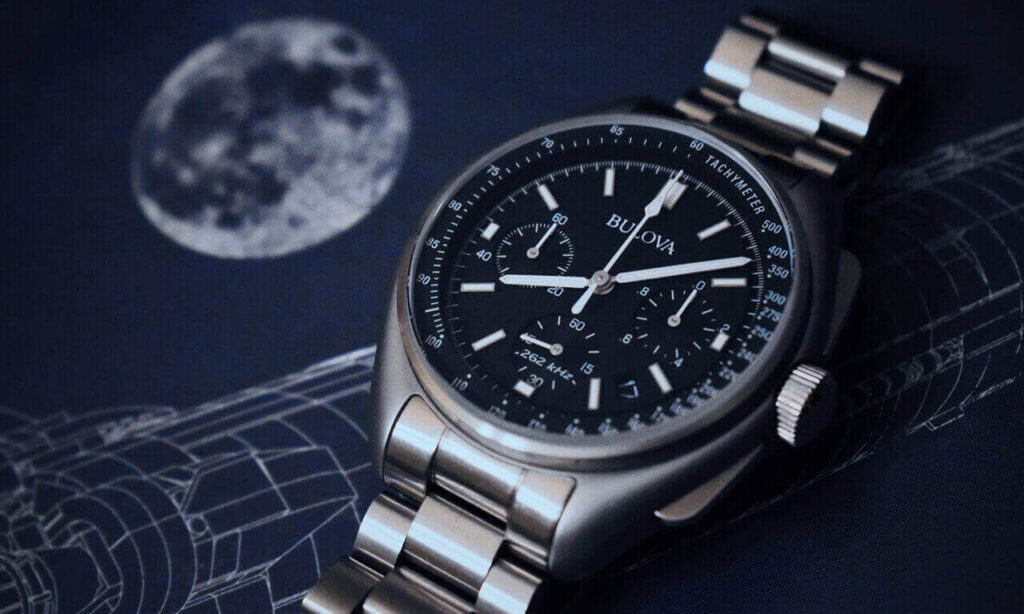The question, “Where are Bulova watches made?”, might seem simple, but the answer reveals a fascinating journey through the history of a brand, the complexities of global manufacturing, and the evolving landscape of the watch industry. Bulova, a name synonymous with innovation and affordability in the watch world, has a long and rich history, spanning over a century. Understanding where its watches are manufactured today requires delving into its past, examining its current ownership and strategic decisions, and considering the broader implications of global watch production. This exploration will not only answer the central question but also shed light on the broader factors influencing the location of watch manufacturing and the impact this has on the final product’s quality, price, and market positioning. This in-depth look will unravel the intricate web of production, exploring the different manufacturing sites, the role of technology, and the overall implications for consumers and the brand itself. We’ll examine the evolution of Bulova’s manufacturing strategy, the benefits and challenges associated with its chosen locations, and ultimately provide a comprehensive understanding of this iconic brand’s production footprint.
Bulova’s Historical Manufacturing Locations
Early Years and American Production
Bulova’s story begins in New York City in 1875, with the founding of the company by Joseph Bulova. For many decades, the brand was strongly associated with American manufacturing, producing a significant portion of its timepieces within the United States. This period is marked by a focus on precision and quality, reflecting the pride associated with “Made in the USA” products. The company’s early success was fueled by its commitment to technological innovation and its reputation for crafting durable and reliable timepieces. This early American manufacturing base helped establish Bulova’s reputation for quality and craftsmanship, a legacy that continues to influence the brand’s image today. The shift away from solely American production was a gradual process, influenced by economic and market factors that we will explore further.

The Impact of Technological Advancements
The introduction of mass-production techniques and automation in the mid-20th century significantly impacted Bulova’s manufacturing processes. While automation allowed for increased efficiency and lower costs, it also contributed to a gradual shift in manufacturing locations. The search for more cost-effective production methods led the company to explore opportunities outside the United States, where labor costs were often lower. This trend was not unique to Bulova; many American manufacturers faced similar pressures during this period.
The Rise of Overseas Manufacturing
As the latter half of the 20th century progressed, Bulova, like many other watch brands, began to diversify its manufacturing locations. This involved establishing partnerships and contracts with manufacturers in various countries, including those in Asia. The decision to move some production overseas was driven primarily by cost considerations. Labor costs in many Asian countries were significantly lower than in the United States, allowing Bulova to produce watches at a more competitive price point. This strategy enabled the company to reach a broader customer base and maintain its market share in a highly competitive industry.
The Influence of Global Supply Chains
The development of sophisticated global supply chains further facilitated the shift towards overseas manufacturing. Bulova could leverage the expertise and capabilities of specialized manufacturers in different countries, sourcing components from various locations and assembling watches in facilities best suited for the task. This approach optimized efficiency and reduced costs, allowing the brand to offer a wider range of products at varying price points. However, this also introduced complexities in managing quality control and ensuring consistency across different manufacturing sites.
Bulova’s Current Manufacturing Landscape
Primary Manufacturing Locations
Today, Bulova’s watches are primarily manufactured in various locations across Asia, particularly in countries known for their expertise in watchmaking and cost-effective production. While precise details regarding the exact factories and their locations are often kept confidential for business reasons, it is well understood that a significant portion of Bulova’s production takes place in regions with established watchmaking industries. This allows Bulova to benefit from existing infrastructure, skilled labor, and established supply chains. The brand strategically selects manufacturing partners based on their capabilities, reputation, and ability to meet Bulova’s quality standards.
Quality Control and Brand Reputation
Maintaining quality control across multiple manufacturing sites presents a significant challenge for Bulova. To address this, the company employs rigorous quality assurance procedures, including regular inspections and audits of its manufacturing partners. Bulova’s commitment to quality is crucial for maintaining its brand reputation and ensuring consumer satisfaction. While some manufacturing processes might be outsourced, the brand maintains strict standards and oversight to guarantee the quality of its products, regardless of their origin. The brand’s heritage and commitment to quality are vital assets, and protecting them is a key strategic priority.
The Role of Technology in Modern Manufacturing
Technological advancements have significantly influenced Bulova’s manufacturing processes. The adoption of advanced robotics, automation, and computer-aided design (CAD) has enhanced efficiency, precision, and consistency in production. These technologies have allowed Bulova to produce watches with greater accuracy and at a faster pace, reducing production times and costs. The integration of such technologies also plays a significant role in maintaining consistent quality across different manufacturing sites.
Sustainability and Ethical Considerations
In recent years, there’s been a growing emphasis on sustainability and ethical considerations in the watch industry. Bulova, like many other brands, is increasingly focusing on these aspects in its manufacturing practices. This includes exploring more environmentally friendly materials, reducing waste, and ensuring fair labor practices across its supply chain. Transparency in sourcing and manufacturing is becoming increasingly important for consumers, and Bulova’s approach to sustainability will influence its brand perception and market position.
The Future of Bulova’s Manufacturing
Strategic Partnerships and Innovation
Bulova’s future manufacturing strategy will likely involve a combination of strategic partnerships with highly skilled manufacturers and continued investment in technological innovation. The company will need to adapt to evolving market demands, technological advancements, and changing consumer preferences. This could involve exploring new materials, production methods, and potentially even a return to some aspects of domestic production, depending on economic and technological developments.
Adapting to Market Trends
The watch industry is dynamic, with changing consumer preferences and technological innovations constantly reshaping the market. Bulova must adapt its manufacturing strategy to these changes. This includes responding to trends in smartwatches, personalized customization, and the growing demand for sustainable and ethically sourced products. Flexibility and adaptability in manufacturing will be crucial for Bulova’s continued success.
Maintaining Brand Identity and Heritage
While adapting to change, Bulova must maintain its brand identity and heritage. The brand’s history of innovation and commitment to quality is a significant asset. This legacy must be carefully preserved and integrated into its future manufacturing strategies. Maintaining a balance between cost-effective production and the preservation of its brand identity will be a key challenge for Bulova in the years to come.
The Importance of Transparency
Increasingly, consumers are demanding greater transparency in the manufacturing processes of the products they buy. Bulova will likely need to enhance its communication around its manufacturing practices, providing more information about its supply chains, ethical considerations, and commitment to sustainability. This transparency will build trust with consumers and enhance the brand’s reputation.
Summary and Recap
The question of where Bulova watches are made has a complex and multifaceted answer. Bulova’s manufacturing history reflects the broader trends in the global watch industry, moving from primarily American production to a more diversified approach involving numerous Asian manufacturing partners. This shift was driven by factors such as cost reduction, technological advancements, and the development of global supply chains. Today, Bulova leverages the expertise and efficiency of overseas manufacturers while maintaining rigorous quality control processes to uphold its brand reputation. The brand’s future will depend on its ability to adapt to evolving market demands, integrate sustainable practices, and maintain its commitment to both cost-effectiveness and the preservation of its rich heritage. The brand’s strategic partnerships and technological investments will be key to navigating the dynamic landscape of the watch industry and continuing to deliver high-quality timepieces to consumers worldwide.
- Key takeaway 1: Bulova’s manufacturing location has evolved significantly over time.
- Key takeaway 2: Cost-effectiveness and access to skilled labor have driven the shift towards Asian manufacturing.
- Key takeaway 3: Maintaining quality control and brand reputation are paramount.
- Key takeaway 4: Technological advancements play a crucial role in modern watch manufacturing.
- Key takeaway 5: Sustainability and ethical considerations are increasingly important.
Frequently Asked Questions (FAQs)
Where are Bulova Accutron watches made?
Accutron watches, known for their unique tuning fork technology, follow a similar manufacturing pattern to other Bulova models. While specific factory locations aren’t publicly disclosed, it’s highly likely that a significant portion of their production, like other Bulova watches, takes place in Asia at facilities specializing in precision watchmaking. Bulova maintains strict quality control regardless of manufacturing location.
Are all Bulova watches made in the same place?
No, Bulova likely uses multiple manufacturing facilities across Asia to produce its diverse range of watches. The choice of factory depends on factors like the watch’s complexity, required expertise, and cost considerations. This is a common practice among many watch brands to optimize production efficiency and cost.
Does Bulova still manufacture any watches in the USA?
Currently, there is no public information suggesting Bulova maintains significant manufacturing operations within the United States. While the brand’s heritage is deeply rooted in American watchmaking, the economic realities of the industry have led to a shift in manufacturing locations over the years.
How can I verify the origin of my Bulova watch?
Unfortunately, the exact manufacturing location isn’t usually explicitly stated on the watch itself or its packaging. Contacting Bulova customer service with your watch’s serial number might provide some information, though they may not disclose the precise factory location for proprietary reasons.
What is Bulova’s approach to ethical and sustainable manufacturing?
Bulova’s approach to ethical and sustainable manufacturing is evolving. While specific details aren’t widely publicized, the brand is likely responding to increasing consumer demand for transparency and responsible manufacturing practices. This might involve using more sustainable materials, improving waste management, and ensuring fair labor practices within its supply chain. Looking for updates on their corporate social responsibility initiatives on their website would be a good place to look for more information.



